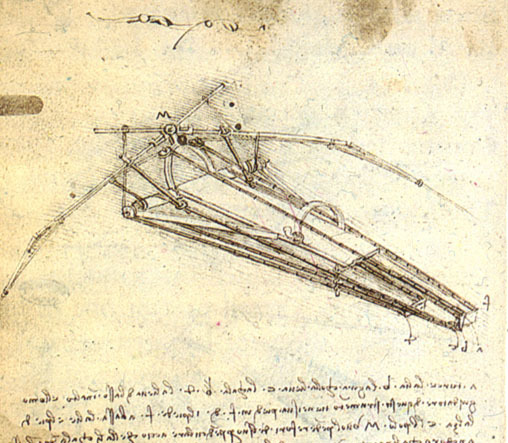Engineering and inventions
During his lifetime, Leonardo was valued as an engineer. In a letter to Ludovico il Moro, he wrote that he could create all sorts of machines both for the protection of a city and for siege. When he fled to Venice in 1499, he found employment as an engineer and devised a system of moveable barricades to protect the city from attack. He also had a scheme for diverting the flow of the Arno river, a project on which Niccolò Machiavelli also worked. Leonardo's journals include a vast number of inventions, both practical and impractical. They include musical instruments, a mechanical knight, hydraulic pumps, reversible crank mechanisms, finned mortar shells, and a steam cannon.
In 1502, Leonardo produced a drawing of a single span 720-foot (220 m) bridge as part of a civil engineering project for Ottoman Sultan Beyazid II of Constantinople. The bridge was intended to span an inlet at the mouth of the Bosporus known as the Golden Horn. Beyazid did not pursue the project because he believed that such a construction was impossible. Leonardo's vision was resurrected in 2001 when a smaller bridge based on his design was constructed in Norway.
Leonardo was fascinated by the phenomenon of flight for much of his life, producing many studies, including Codex on the Flight of Birds (c. 1505), as well as plans for several flying machines such as a flapping ornithopter and a machine with a helical rotor. The British television station Channel Four commissioned a 2003 documentary, Leonardo's Dream Machines, in which various designs by Leonardo, such as a parachute and a giant crossbow, were interpreted, constructed and tested. Some of those designs proved successful, whilst others fared less well when practically tested.








0 comments
Sign in or create a free account